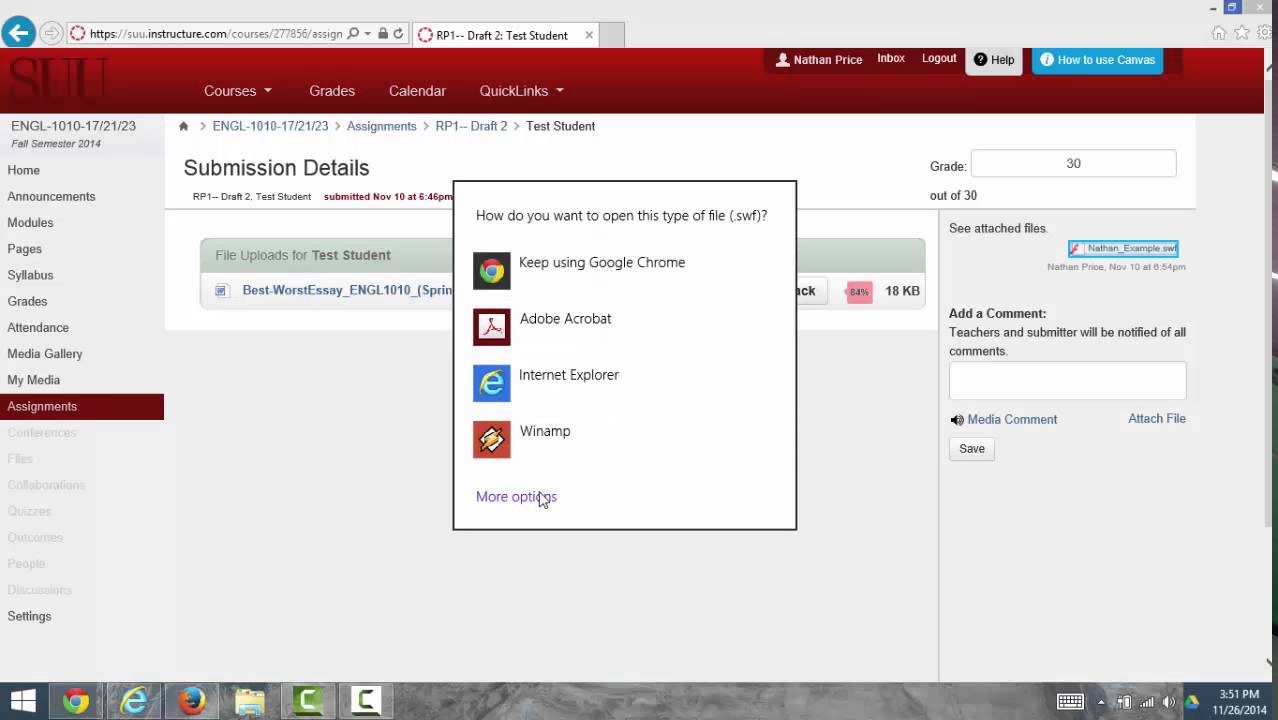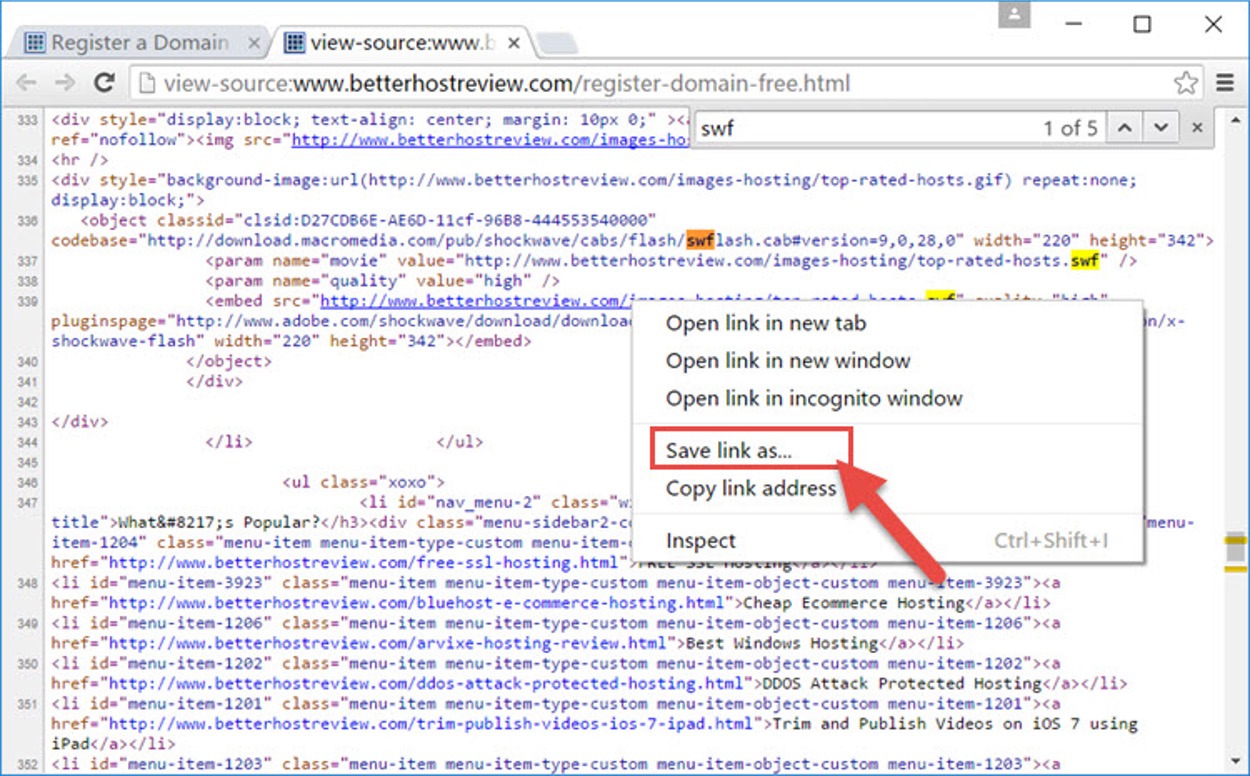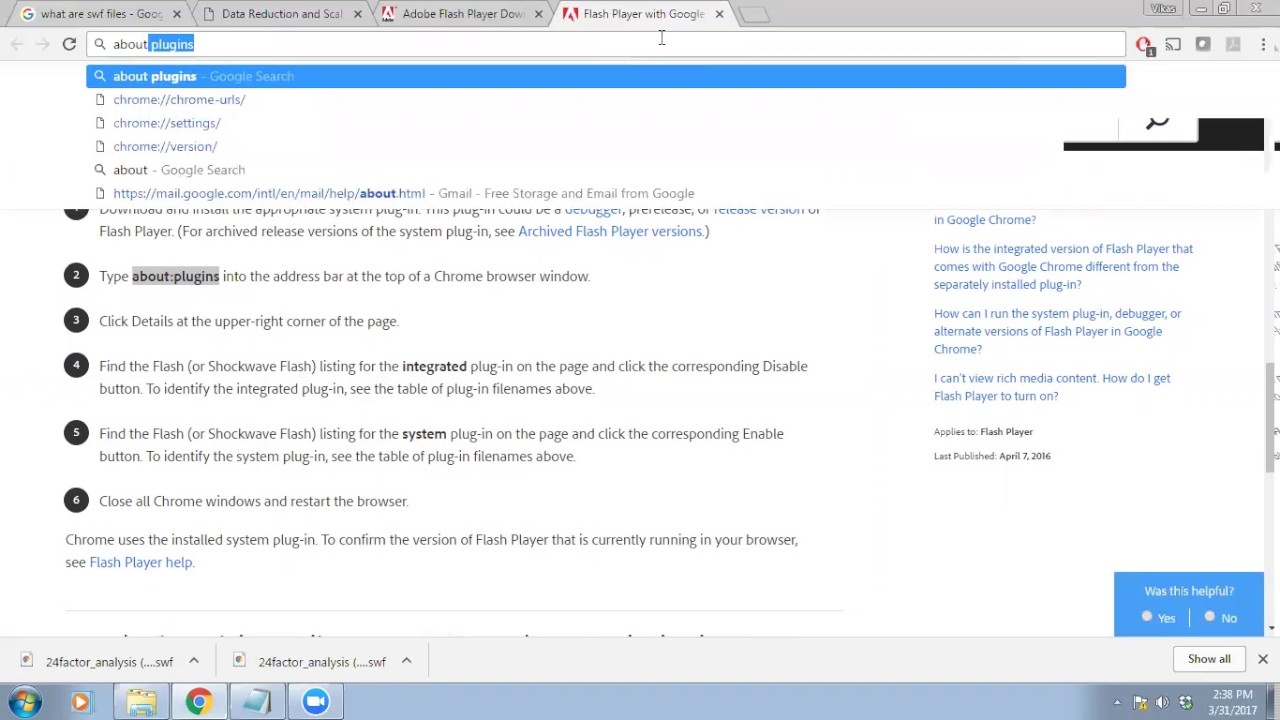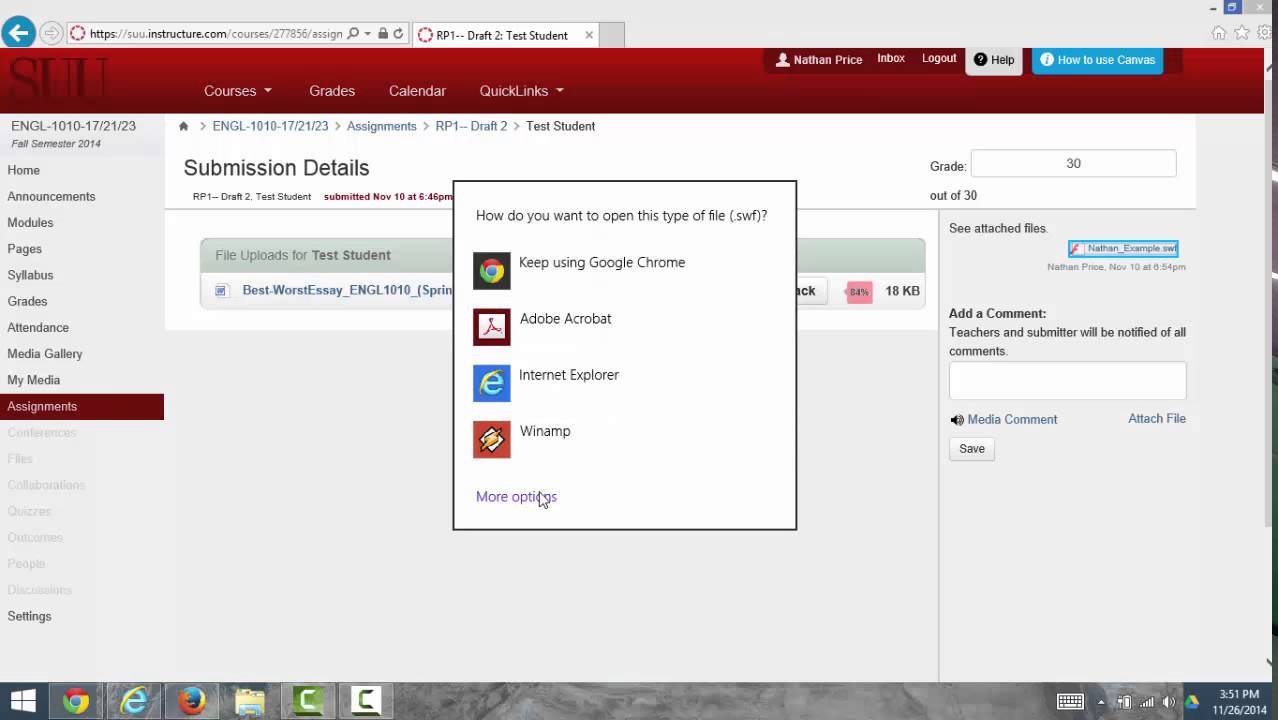Introduction
Running SWF (Shockwave Flash) files in Firefox can be a valuable capability, especially for those who encounter SWF content while browsing the web. SWF files are often used for multimedia, interactive games, and animations, and being able to access and view them directly in the Firefox browser can enhance the overall web experience.
In this article, we will explore various methods for running SWF files in Firefox. Whether you're trying to play a Flash game, view an interactive presentation, or access other SWF content, these methods will provide you with the tools to seamlessly integrate SWF files into your Firefox browsing experience.
By understanding the different approaches available, you can choose the method that best suits your needs and preferences. From using SWF player add-ons to standalone SWF players and even converting SWF files to HTML5, we'll cover the diverse options at your disposal. Each method offers its own set of advantages and considerations, allowing you to make an informed decision based on your specific requirements.
With the increasing shift away from Flash-based content on the web, it's important to be equipped with the knowledge and tools to access SWF files in a manner that aligns with modern web standards. This article aims to provide you with practical insights and solutions to ensure that you can continue to engage with SWF content seamlessly within the Firefox browser.
Now, let's delve into the methods for running SWF files in Firefox, empowering you to make the most of your browsing experience and access the diverse range of SWF content available on the web.
Method 1: Using an SWF Player Add-On
One of the most convenient ways to run SWF files in Firefox is by utilizing an SWF player add-on. These browser extensions are designed to seamlessly integrate with Firefox, allowing you to play SWF content directly within the browser window. By leveraging an SWF player add-on, you can enhance your browsing experience by gaining the ability to access and interact with SWF files without the need for external applications or plugins.
Advantages of SWF Player Add-Ons
- Seamless Integration: SWF player add-ons seamlessly integrate with Firefox, providing a user-friendly solution for playing SWF files without requiring additional software installations.
- Enhanced Accessibility: With an SWF player add-on, you can easily access and view SWF content directly within the Firefox browser, eliminating the need to download files or use external players.
- Convenience: The convenience of playing SWF files within the browser window enhances the overall user experience, allowing for quick and effortless access to multimedia and interactive content.
Considerations When Choosing an SWF Player Add-On
- Compatibility: Ensure that the chosen SWF player add-on is compatible with your version of Firefox to guarantee optimal functionality.
- User Reviews and Ratings: Prioritize add-ons with positive user reviews and high ratings to ensure reliability and performance.
- Feature Set: Consider the features offered by different SWF player add-ons, such as customization options, playback controls, and compatibility with various SWF file types.
Steps to Use an SWF Player Add-On in Firefox
- Search and Install: Navigate to the Firefox Add-ons website and search for SWF player add-ons. Choose a reputable add-on and install it in your Firefox browser.
- Enable the Add-On: Once installed, enable the SWF player add-on within Firefox to activate its functionality.
- Access SWF Content: With the add-on enabled, you can now access SWF files while browsing the web. When encountering SWF content, the add-on will facilitate seamless playback within the Firefox browser window.
By leveraging an SWF player add-on, you can unlock the ability to play SWF files directly within Firefox, enhancing your browsing experience and enabling effortless access to a wide range of multimedia and interactive content.
This method offers a user-friendly and efficient solution for running SWF files in Firefox, catering to individuals who prefer a seamless and integrated approach to accessing SWF content while browsing the web.
Method 2: Using a Standalone SWF Player
Another approach to run SWF files in Firefox involves utilizing a standalone SWF player. Unlike the method of using an SWF player add-on, which integrates directly into the browser, a standalone SWF player is a separate application that allows you to open and play SWF files independently from the Firefox browser.
Advantages of Using a Standalone SWF Player
-
Enhanced Control: With a standalone SWF player, you have greater control over the playback and management of SWF files, as it operates as a dedicated application outside the browser environment.
-
Customization Options: Standalone SWF players often offer a range of customization options, allowing users to adjust settings related to playback, display, and other preferences.
-
Offline Access: By using a standalone SWF player, you can access and play SWF files even when offline, providing flexibility and convenience for viewing multimedia and interactive content.
Considerations When Choosing a Standalone SWF Player
-
Compatibility: Ensure that the standalone SWF player is compatible with your operating system and meets the necessary system requirements for optimal performance.
-
Feature Set: Evaluate the features offered by different standalone SWF players, such as playback controls, file format support, and additional functionalities that align with your specific needs.
-
User Interface: Consider the user interface and usability of the standalone SWF player to ensure a seamless and intuitive experience when opening and playing SWF files.
Steps to Use a Standalone SWF Player with Firefox
-
Download and Install: Begin by downloading a reputable standalone SWF player from a trusted source. Once downloaded, install the application on your computer according to the provided instructions.
-
Open SWF Files: After installing the standalone SWF player, you can open SWF files directly within the application by using the "Open" or "Import" feature to browse for and select the desired SWF file.
-
Playback and Interaction: Utilize the standalone SWF player's interface to control the playback, interact with the SWF content, and explore any additional features or settings available within the application.
By leveraging a standalone SWF player, you can gain greater control and flexibility when it comes to accessing and playing SWF files, offering an alternative method for engaging with multimedia and interactive content outside the confines of the Firefox browser.
Method 3: Converting SWF to HTML5
In the evolving landscape of web technologies, the transition from Flash-based content, including SWF files, to HTML5 has become increasingly prevalent. As major web browsers have shifted away from supporting Flash, the need to convert SWF files to HTML5-compatible formats has grown in significance. By converting SWF to HTML5, users can ensure the continued accessibility and seamless playback of multimedia and interactive content within modern web environments, including Firefox.
Advantages of Converting SWF to HTML5
-
Cross-Platform Compatibility: HTML5-based content is compatible across various platforms and devices, ensuring a consistent user experience regardless of the device or operating system being used.
-
Improved Performance: HTML5 offers enhanced performance and efficiency compared to Flash-based content, resulting in smoother playback and reduced resource consumption.
-
Mobile-Friendly: HTML5 content is well-suited for mobile devices, providing responsive and adaptive experiences for users accessing SWF content on smartphones and tablets.
-
Browser Support: HTML5 is widely supported by modern web browsers, including Firefox, ensuring broader accessibility and compatibility for SWF content converted to HTML5.
Considerations When Converting SWF to HTML5
-
Conversion Tools: Evaluate the available tools and software solutions designed for converting SWF files to HTML5 formats. Consider factors such as conversion accuracy, ease of use, and compatibility with different SWF file types.
-
Interactive Elements: Assess the compatibility of interactive elements and functionalities within the SWF content to ensure a seamless transition to HTML5 without compromising the user experience.
-
Optimization: Consider optimization techniques for HTML5 content to maintain performance and visual fidelity during the conversion process, especially for complex multimedia and interactive SWF files.
Steps to Convert SWF to HTML5 for Firefox Compatibility
-
Select a Conversion Tool: Choose a reputable SWF to HTML5 conversion tool or software that aligns with your specific requirements. Ensure that the chosen tool supports the features and interactivity present in the original SWF content.
-
Import and Convert: Use the selected conversion tool to import the SWF file and initiate the conversion process to generate an HTML5-compatible version of the content. Follow the tool's instructions to configure settings and options for the conversion.
-
Quality Assurance: After conversion, thoroughly test the HTML5 output to verify the integrity of multimedia elements, interactive components, and overall functionality. Address any discrepancies or issues that may arise during the conversion process.
-
Integration with Firefox: Once the SWF content has been successfully converted to HTML5, integrate the HTML5 version into Firefox for seamless playback and interaction. Ensure that the HTML5 content functions as intended within the Firefox browser environment.
By converting SWF files to HTML5, users can adapt to the changing web landscape and ensure the continued accessibility and compatibility of multimedia and interactive content within Firefox and other modern web browsers. This method empowers users to embrace HTML5 as a versatile and future-proof alternative to Flash-based SWF content, aligning with the evolving standards of web technology and user experience.
Conclusion
In conclusion, the ability to run SWF files in Firefox is a valuable capability that enhances the overall web browsing experience. As we've explored in this article, there are multiple methods available for seamlessly integrating SWF content into the Firefox browser, each offering its own set of advantages and considerations.
Using an SWF player add-on provides a user-friendly and integrated solution, allowing for the effortless playback of SWF files directly within the browser window. The convenience and accessibility offered by SWF player add-ons cater to individuals seeking a seamless approach to engaging with multimedia and interactive content while browsing the web.
Alternatively, utilizing a standalone SWF player offers enhanced control and flexibility, allowing users to manage and play SWF files as standalone applications outside the browser environment. This method is well-suited for individuals who prefer greater autonomy and customization options when interacting with SWF content.
Furthermore, the option to convert SWF files to HTML5 presents a forward-looking approach to ensuring the continued accessibility and compatibility of multimedia and interactive content within modern web environments, including Firefox. By embracing HTML5 as a versatile and future-proof alternative to Flash-based SWF content, users can adapt to the evolving standards of web technology and user experience.
It's important to recognize that the landscape of web technologies continues to evolve, with a gradual shift away from Flash-based content toward more modern and universally supported formats. As a result, the methods discussed in this article provide users with the tools to navigate this transition effectively, ensuring that they can continue to access and engage with SWF content seamlessly within the Firefox browser.
Ultimately, the diverse methods for running SWF files in Firefox empower users to make informed decisions based on their specific preferences and requirements. Whether it's through the use of browser add-ons, standalone players, or the conversion to HTML5, individuals can tailor their approach to accessing SWF content in a manner that aligns with modern web standards and their unique browsing habits.
By understanding and leveraging these methods, users can continue to enjoy the rich multimedia and interactive experiences offered by SWF content while embracing the advancements in web technology that shape the future of online interactions and content consumption.

























